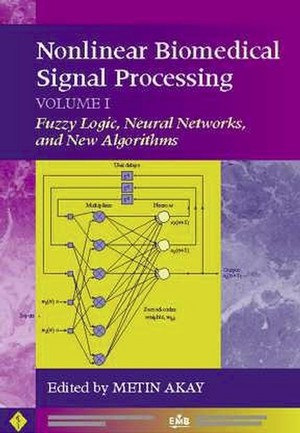Nonlinear Biomedical Signal Processing: Fuzzy Logic, Neural Networks, and New Algorithms, Volume 1

PREFACE
Fuzzy set theory derives from the fact that almost all natural classes and concepts are fuzzy rather than crisp in nature. According to Lotfi Zadeh, who is the founder of fuzzy logic, all the reasoning that people use everyday is approximate in nature. People work from approximate data, extract meaningful information from massive data, and find crisp solutions. Fuzzy logic provides a suitable basis for the ability to summarize information and to extricate information from the collections of masses of data.
Like fuzzy logic, the concept of neural networks was introduced approximately four decades ago. But theoretical developments in the last decade have led to numerous new approaches, including multiple-layer networks, Kohenen networks, and Hopfield networks. In addition to the various structures, numerous learning algorithms have been developed, including back-propagation, Bayesian, potential functions, and genetic algorithms.
In Volume I, the concepts of fuzzy logic are applied, including fuzzy clustering, uncertainty management, fuzzy set theory, possibility theory, and approximate reasoning
for biomedical signals and biological systems. In addition, the fundamentals
of neural networks and new learning algorithms with implementations and medical applications are presented.
Chapter 1 by Bouchon-Meunier is devoted to a review of the concepts of fuzzy logic, uncertainty management, possibility theories, and their implementations.
Chapter 2 by Geva discusses the fundamentals of fuzzy clustering and nonstationary
fuzzy clustering algorithms and their applications to electroencephalography and
heart rate variability signals.
Chapter 3 by Haykin gives a guided tour of neural networks, including supervised and unsupervised learning, neurodynamical programming, and dynamically driven recurrent neural networks. Chapter 4 by Nazeran and Behbehani reviews in-depth the classical neural networks
implementations for the analysis of biomedical signals including
electrocardiography, electromyography, electroencephalography, and respiratory signals.
Chapter 5 by Choe et al. discusses rare event detection in genomic sequences using neural networks and sample stratification, which makes each sample in the data sequence to have equal influence during the learning process.
Chapters 6 and 7 by Karayiannis are devoted to the soft learning vector quantization
and clustering algorithms based on reformulation and an axiomatic approach to
reformulating radial-basis neural networks.
Download
*

PREFACE
Fuzzy set theory derives from the fact that almost all natural classes and concepts are fuzzy rather than crisp in nature. According to Lotfi Zadeh, who is the founder of fuzzy logic, all the reasoning that people use everyday is approximate in nature. People work from approximate data, extract meaningful information from massive data, and find crisp solutions. Fuzzy logic provides a suitable basis for the ability to summarize information and to extricate information from the collections of masses of data.
Like fuzzy logic, the concept of neural networks was introduced approximately four decades ago. But theoretical developments in the last decade have led to numerous new approaches, including multiple-layer networks, Kohenen networks, and Hopfield networks. In addition to the various structures, numerous learning algorithms have been developed, including back-propagation, Bayesian, potential functions, and genetic algorithms.
In Volume I, the concepts of fuzzy logic are applied, including fuzzy clustering, uncertainty management, fuzzy set theory, possibility theory, and approximate reasoning
for biomedical signals and biological systems. In addition, the fundamentals
of neural networks and new learning algorithms with implementations and medical applications are presented.
Chapter 1 by Bouchon-Meunier is devoted to a review of the concepts of fuzzy logic, uncertainty management, possibility theories, and their implementations.
Chapter 2 by Geva discusses the fundamentals of fuzzy clustering and nonstationary
fuzzy clustering algorithms and their applications to electroencephalography and
heart rate variability signals.
Chapter 3 by Haykin gives a guided tour of neural networks, including supervised and unsupervised learning, neurodynamical programming, and dynamically driven recurrent neural networks. Chapter 4 by Nazeran and Behbehani reviews in-depth the classical neural networks
implementations for the analysis of biomedical signals including
electrocardiography, electromyography, electroencephalography, and respiratory signals.
Chapter 5 by Choe et al. discusses rare event detection in genomic sequences using neural networks and sample stratification, which makes each sample in the data sequence to have equal influence during the learning process.
Chapters 6 and 7 by Karayiannis are devoted to the soft learning vector quantization
and clustering algorithms based on reformulation and an axiomatic approach to
reformulating radial-basis neural networks.
Download
*